
A counterbore is used to enlarge the opening of a hole, producing a flat bottom so a socket-head screw will fit flush with the surface of the part. A pilot guides the tool into the pre-drilled hole which is being enlarged.
This is similar to another type of tool called a countersink, which cuts at an angle to create a conical hole so that an angled screwhead will sit flush with the surface. The image below demonstrates the difference between holes created by countersinks (left) and counterbores (right):

There are also Counterbore Drill Bits which do not require a pre-drilled hole, as the end of the pilot has a drill tip that is able to start the hole itself. These should be listed using the Twist Drill Bit category rather than the Counterbore category.
Use WD-40 and a Scotch-Brite pad to remove any rust or residue, being careful not to remove any labeling or scratch / damage the cutting edges. Wipe down with a dry rag before taking pictures to remove fingerprints and any excess residue.
Click here for info on how to upload pictures
If you are picturing a single counterbore:
1st Picture: A three-quarters (or "3D") shot of the counterbore, with the working end toward the camera. Any packaging must be included in this picture.
2nd Picture: A side view of the counterbore, with a tape measure at the bottom of the frame to provide size reference. Make sure there is sufficient space between the counterbore and the tape measure so that the tape measure is not covering up any part of the counterbore. If there is labeling, orient the counterbore so that the labeling is readable (i.e., right-side up). If there is any packaging, include it in this picture as well.
NOTE: If you have packaging with labeling that does not match the item, black it out with a marker before taking pictures. Used items can often end up in mismatched packages and we do not want to cause confusion by having inaccurate brands or part numbers showing in the listing.
3rd Picture: A close-up, head-on shot of the working end.
4th Picture: A close-up shot of the labeling. Depending on the size of the counterbore and where the labeling is located, this may require more than one picture. If there is no labeling, or if it is too faded to show up in a photo, skip this picture.
5th & 6th Pictures (Morse Taper Shank Only): A close-up shot of the tang at the end of the shank (both sides) Refer to "Picture 5" and "Picture 6" in the first example below.
Additional Pictures: Any damage or modification to the shank or cutting edges must be clearly pictured. Use a pen to point to the damaged / modified areas. Refer to the second set of pictures below for an example. If there are any flat sections on the shank (whether manufactured or modified) which are not clearly visible in the previous pictures, they should be shown in an additional picture as well. If you think you may need additional pictures for any other reason, check with your trainer to see if they are necessary.
Refer to the examples below:
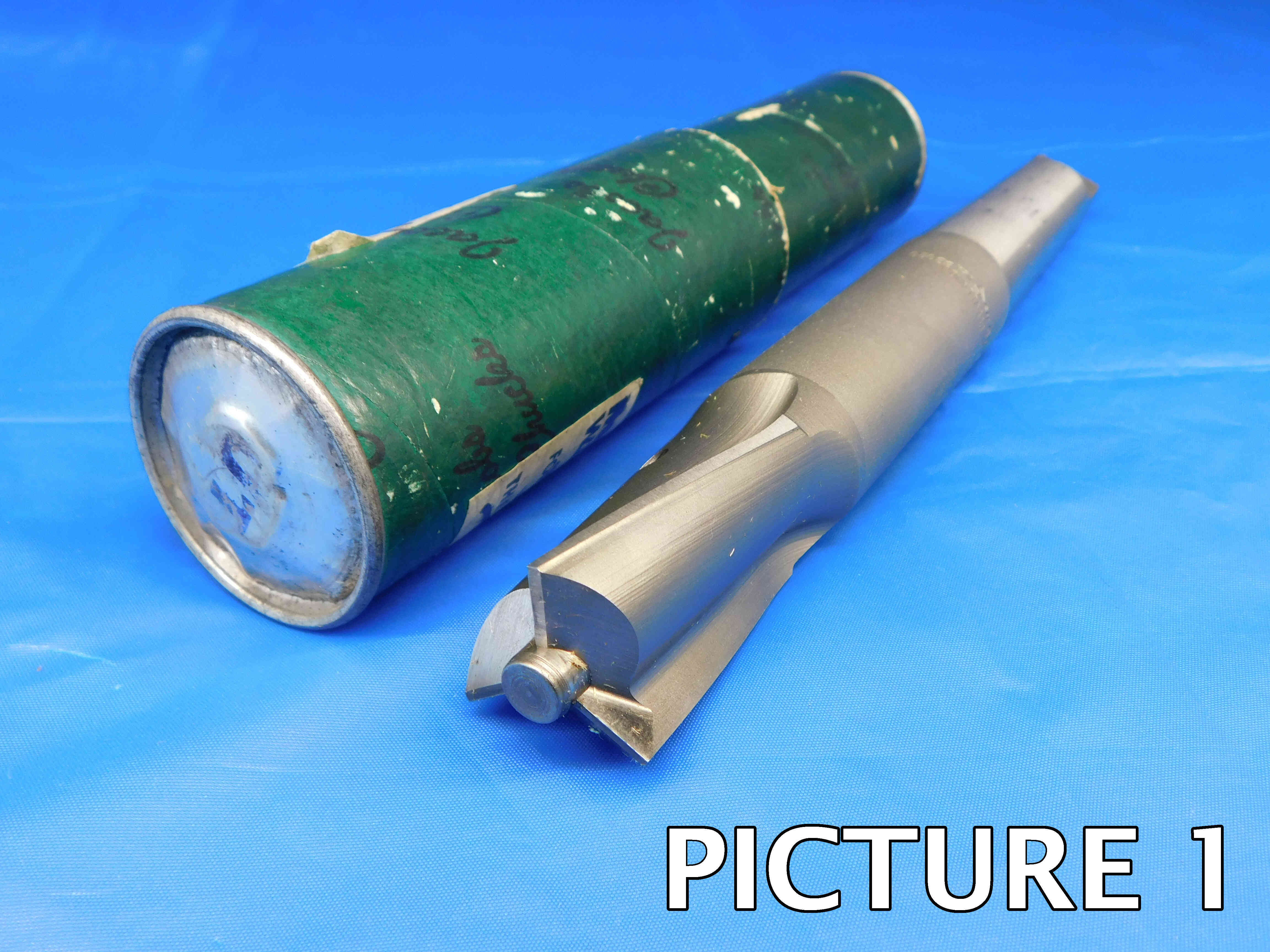
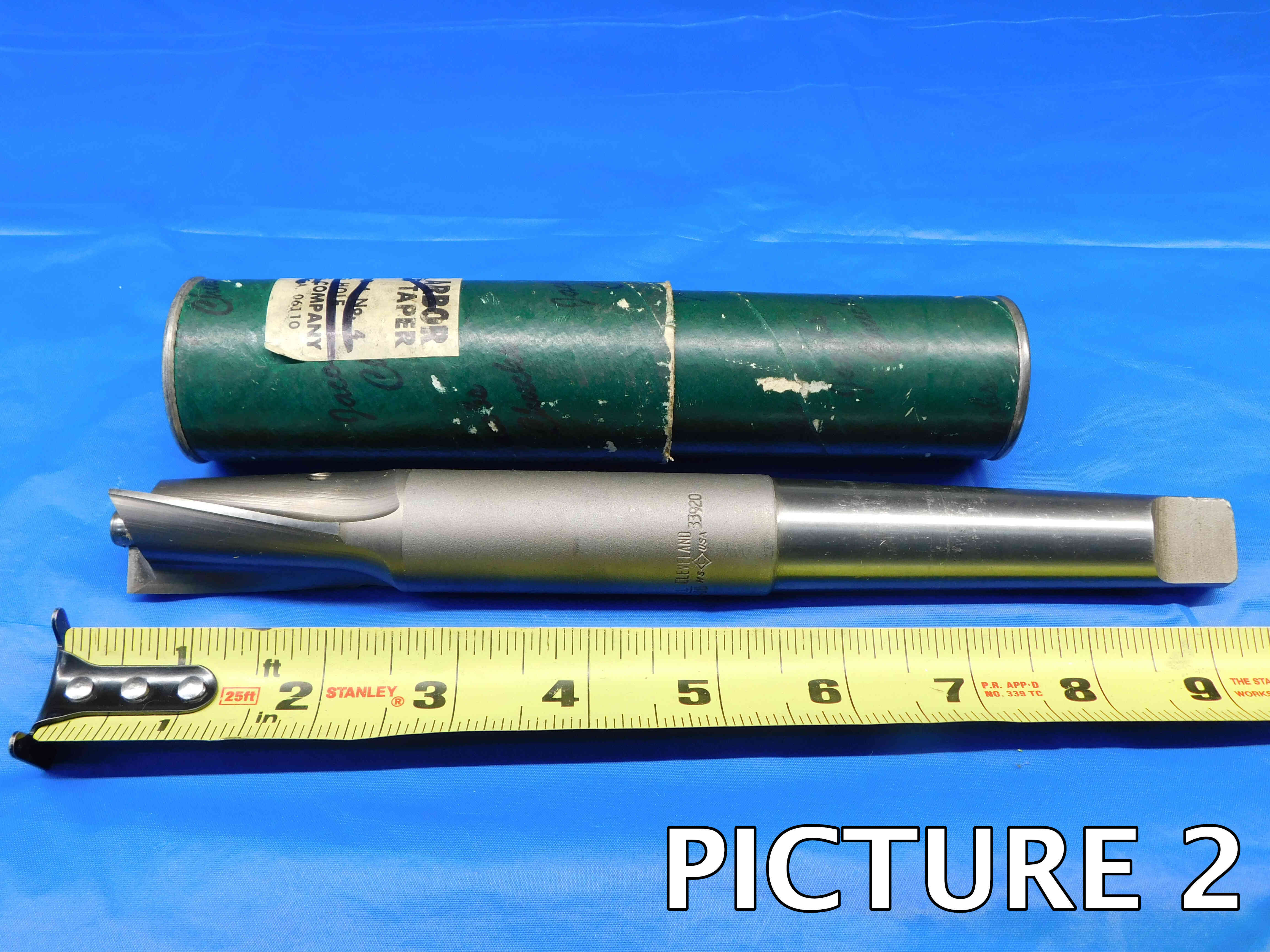
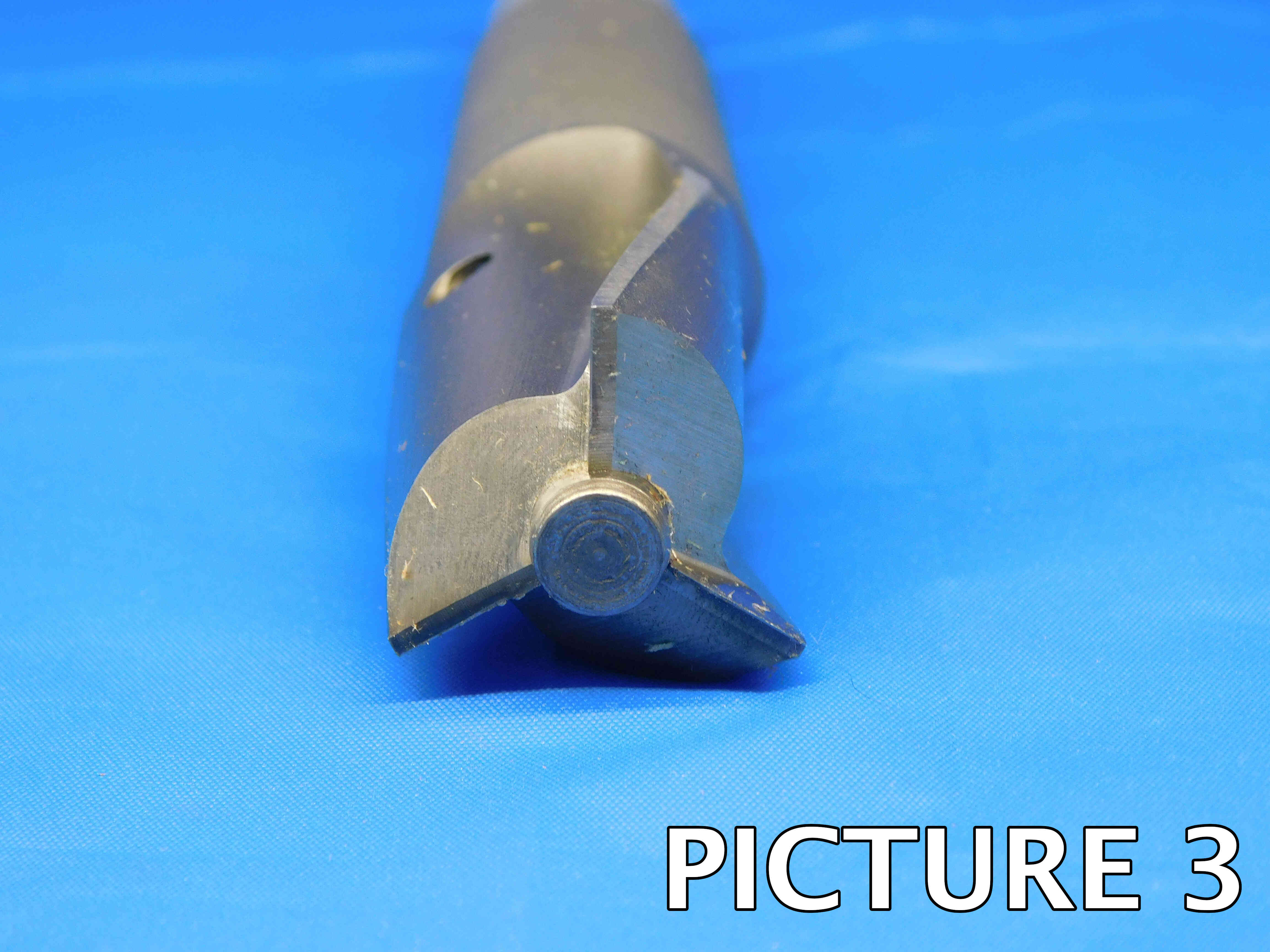
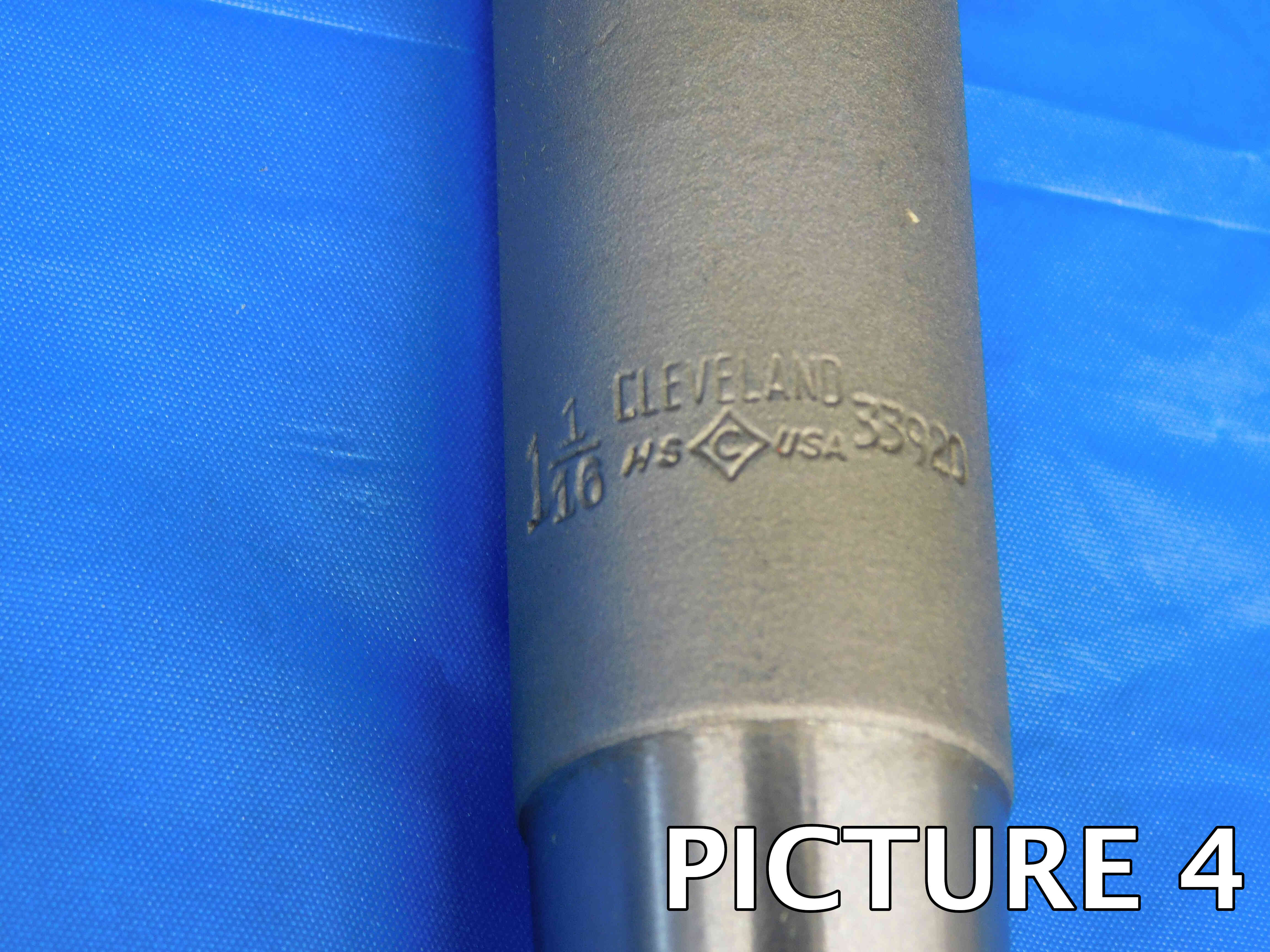
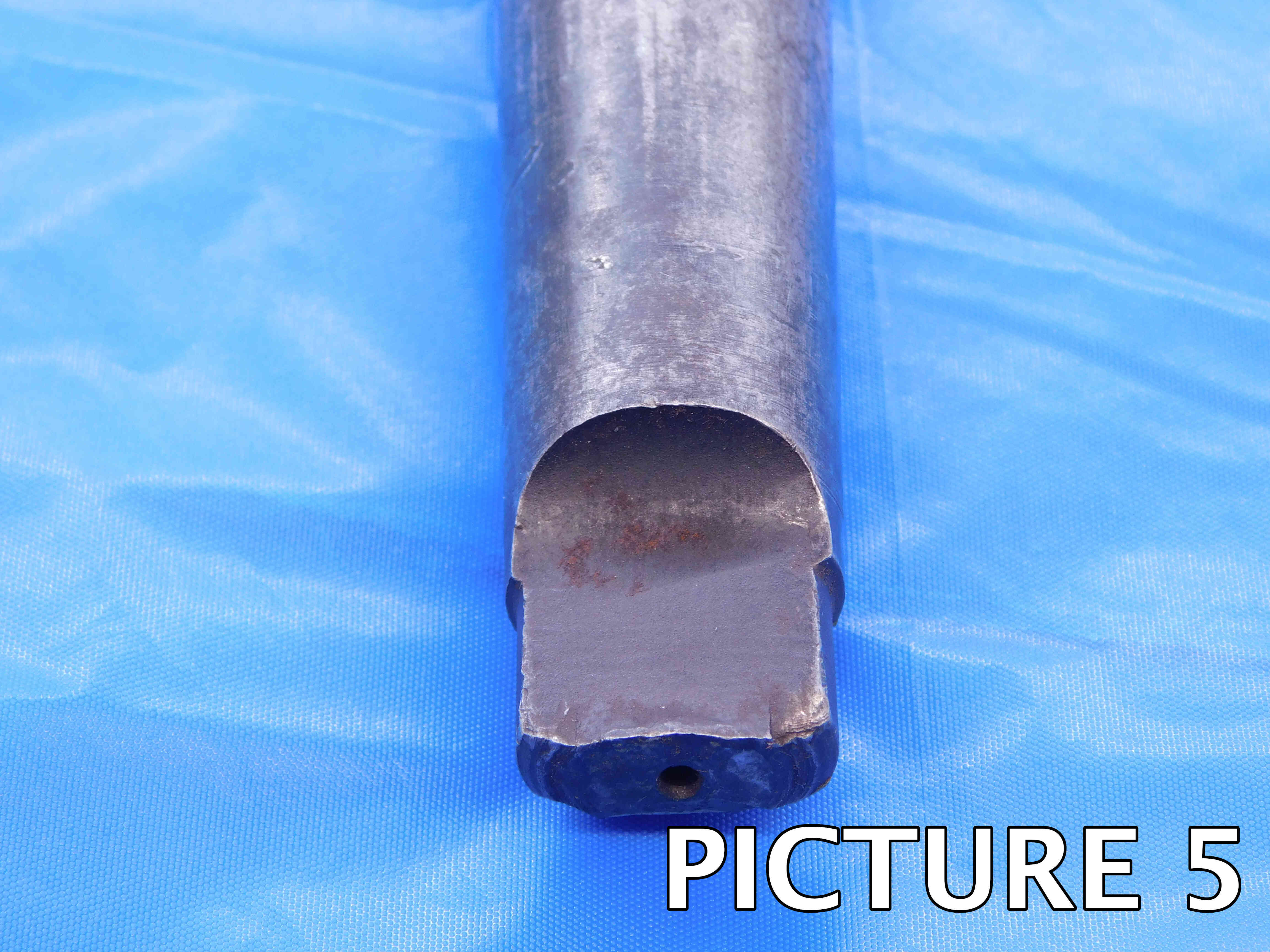
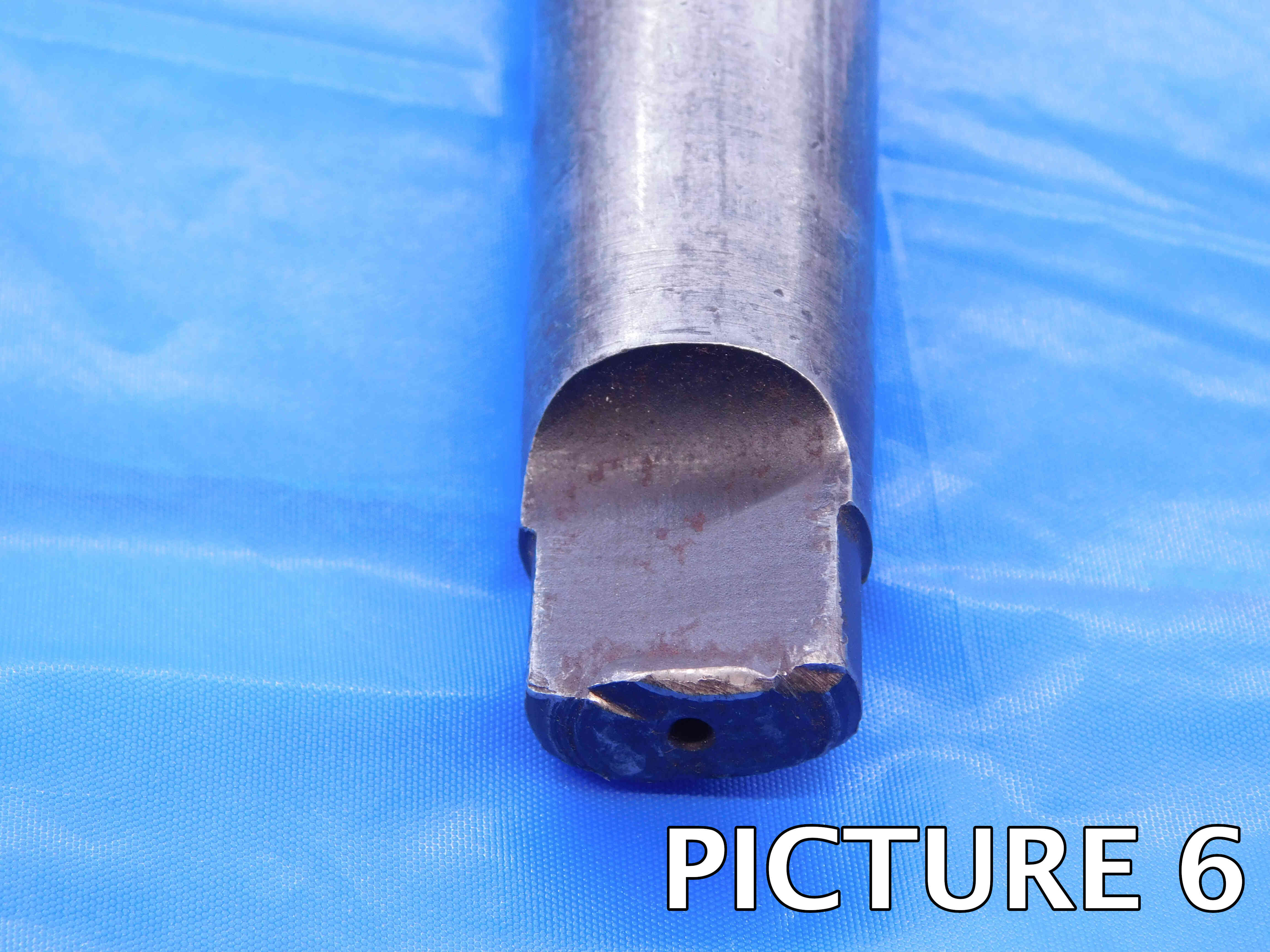
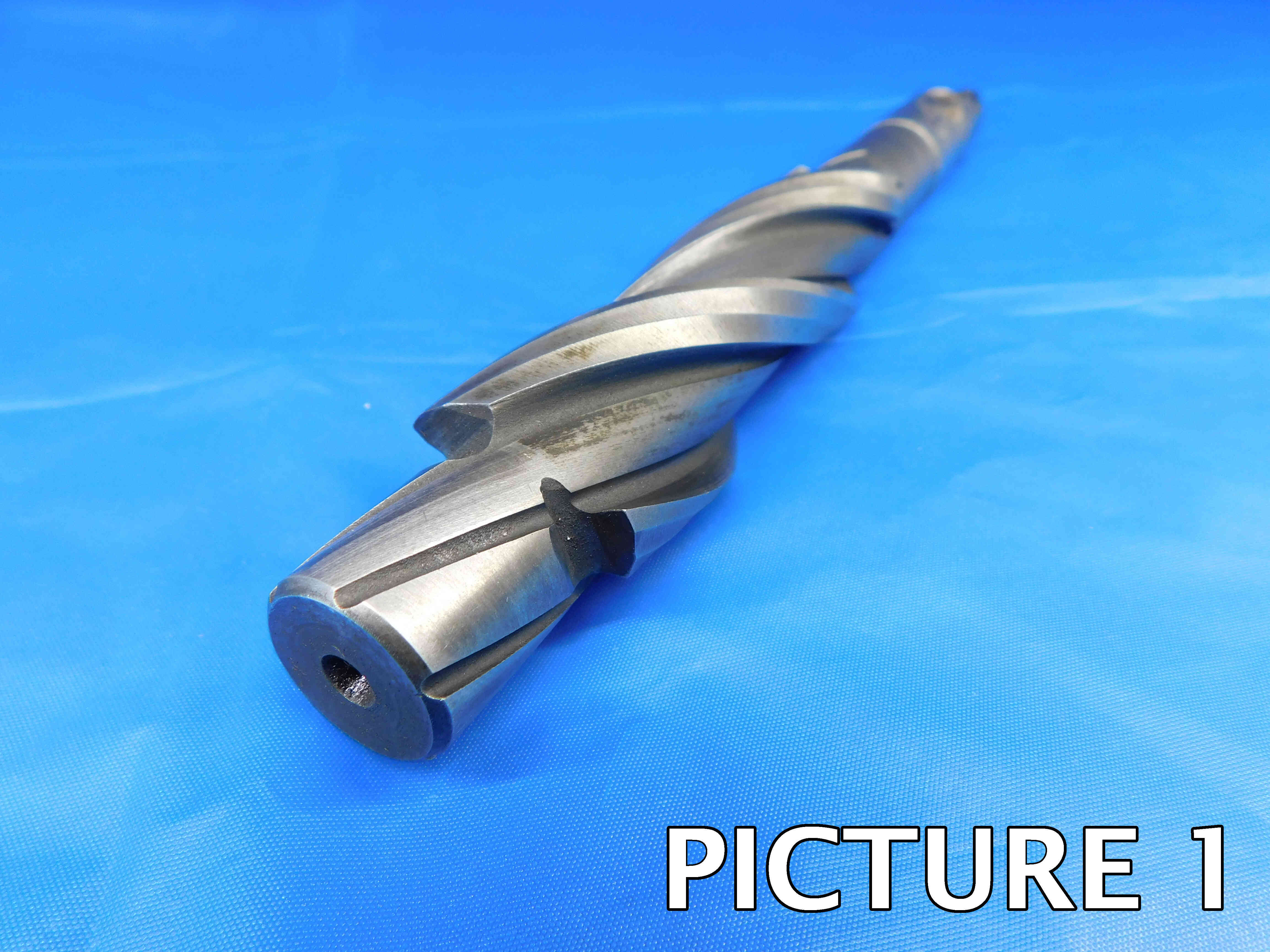
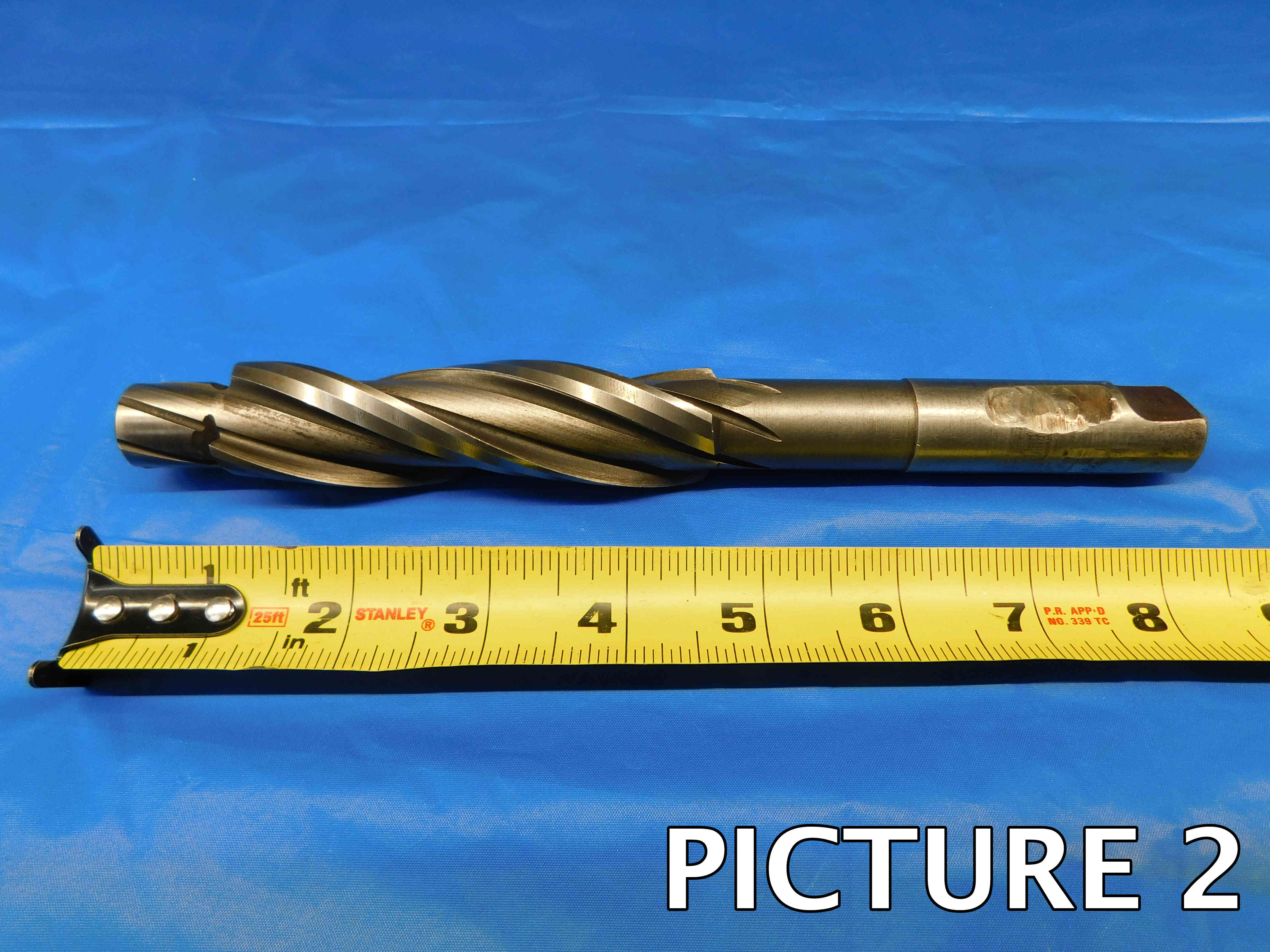
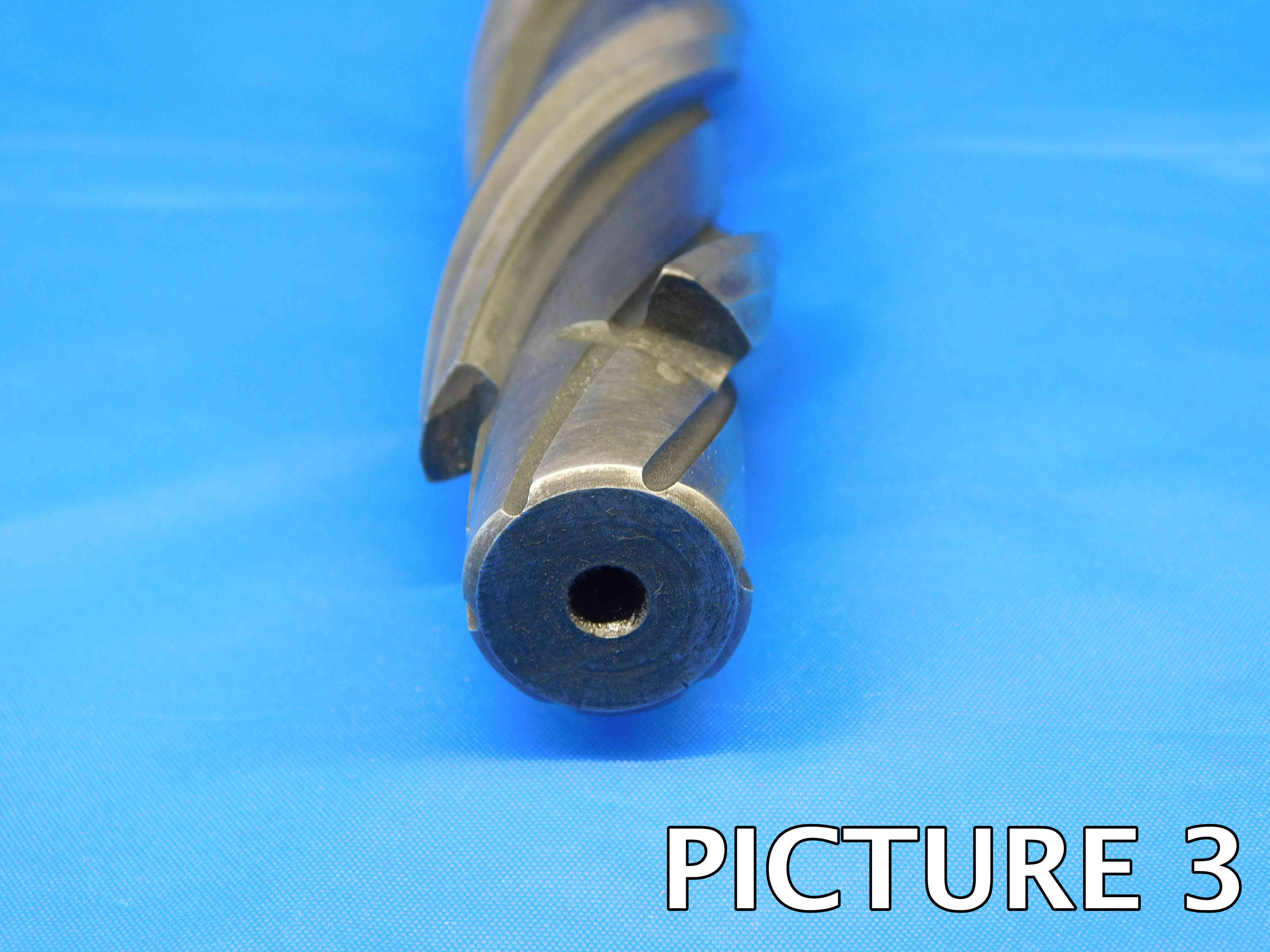
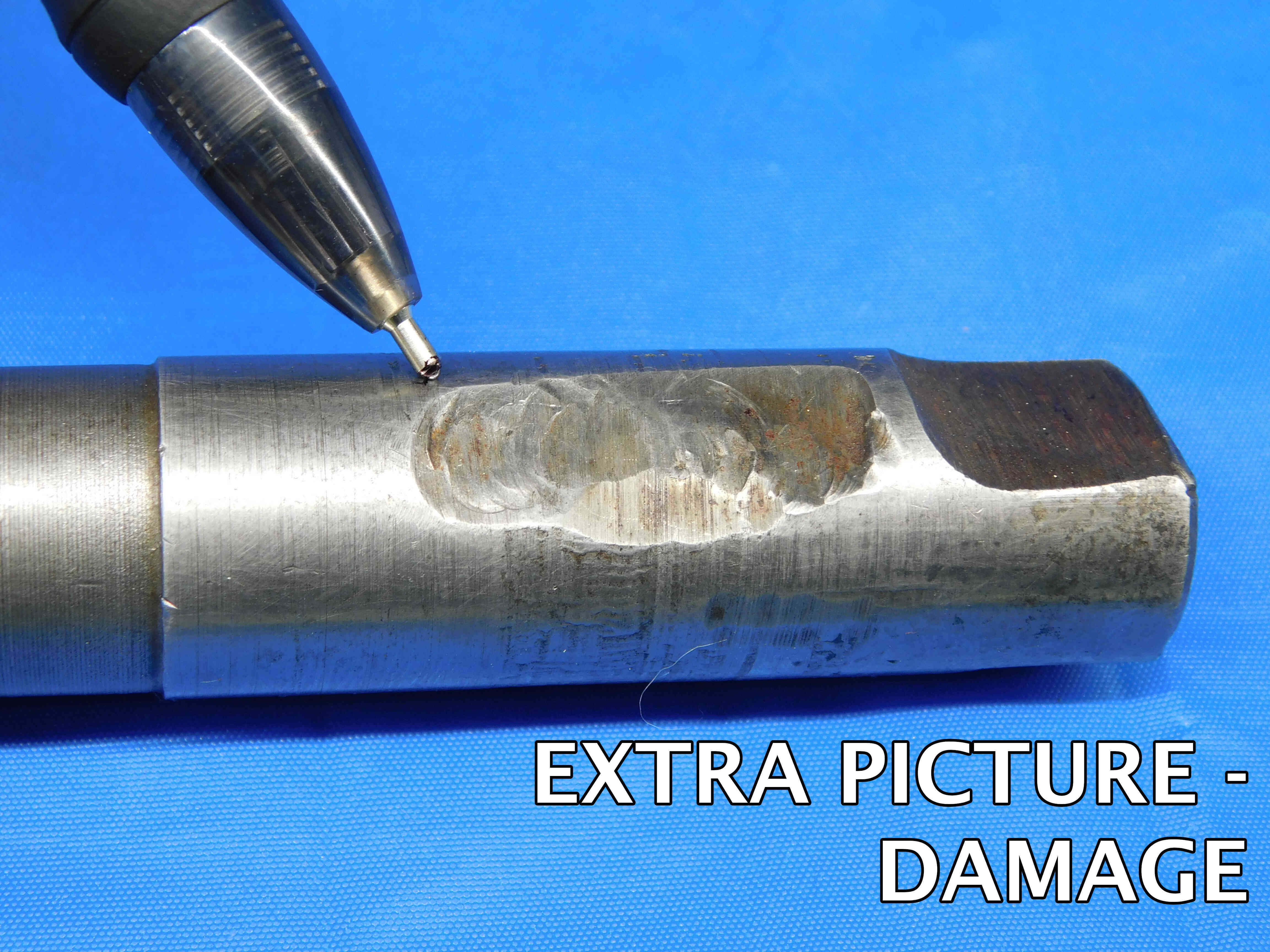
If you are picturing multiple counterbores:
1st Picture: A side view of the counterbores, with a tape measure at the bottom of the frame to provide size reference. If the counterbores are different sizes, position them with the smallest at the front (closest to tape measure) and the largest in back. Make sure there is sufficient space between the counterbores and the tape measure so that the tape measure is not covering up any part of the counterbores. If there is labeling, orient the counterbores so that the labeling is readable (i.e., right-side up). If there is any packaging, include it in this picture as well.
NOTE: If you have packaging with labeling that does not match the item, black it out with a marker before taking pictures. Used items can often end up in mismatched packages and we do not want to cause confusion by having inaccurate brands or part numbers showing in the listing.
2nd Picture: A close-up, head-on shot of the working ends. If you are picturing a particularly large number of counterbores, this might require multiple pictures.
3rd Picture: A close-up shot of the labeling. If all of the counterbores are identical, only one needs to be included in this picture. Otherwise, try to get all of the different labels in as few shots as possible while still being readable. Depending on the size of the counterbores and where their labeling is located, this may require multiple pictures. If there is no labeling, or if it is too faded to show up in a photo, skip this picture (this is the case in the example below).
Additional Pictures: Any damage or modification to the shank or cutting edges must be clearly pictured. Use a pen to point to the damaged / modified areas (Note: in the example below, we did not use a pen to point to the damage, because we are showing multiple points of damage across several counterbores). If there are any flat sections on the shank (whether manufactured or modified) which are not clearly visible in the previous pictures, they should be shown in an additional picture as well. If you think you may need additional pictures for any other reason, check with your trainer to see if they are necessary.
Please refer to the examples below:
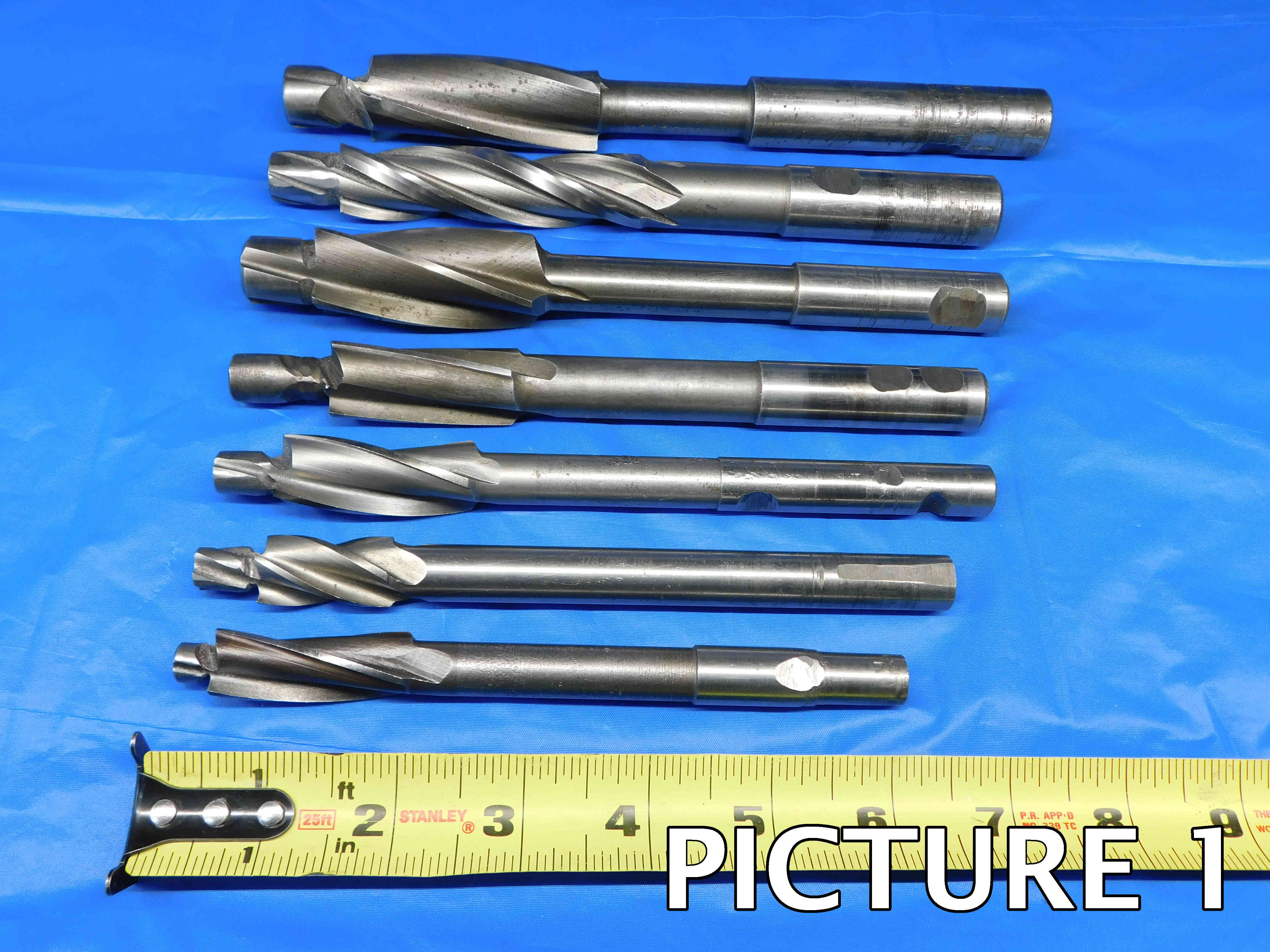
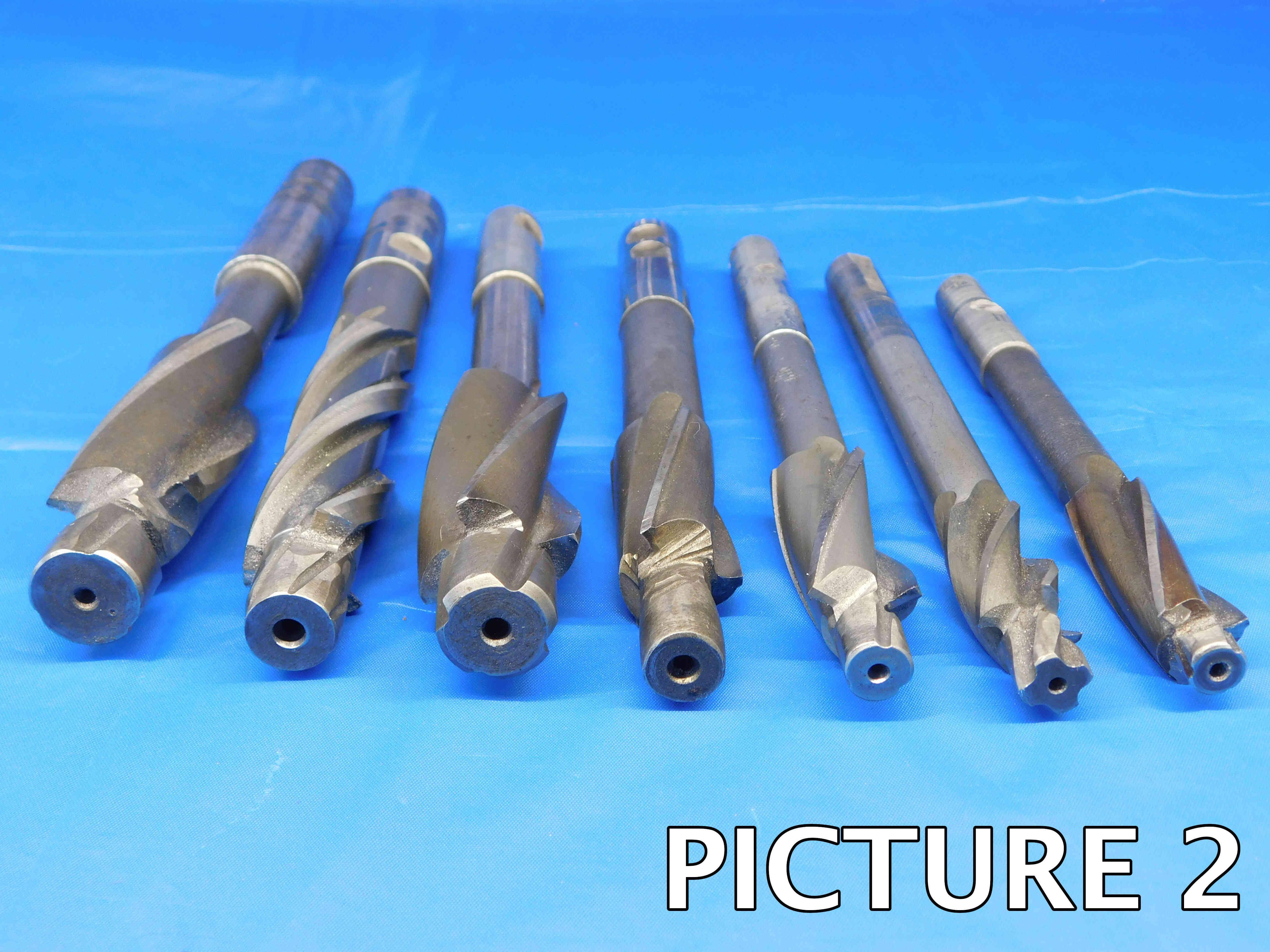
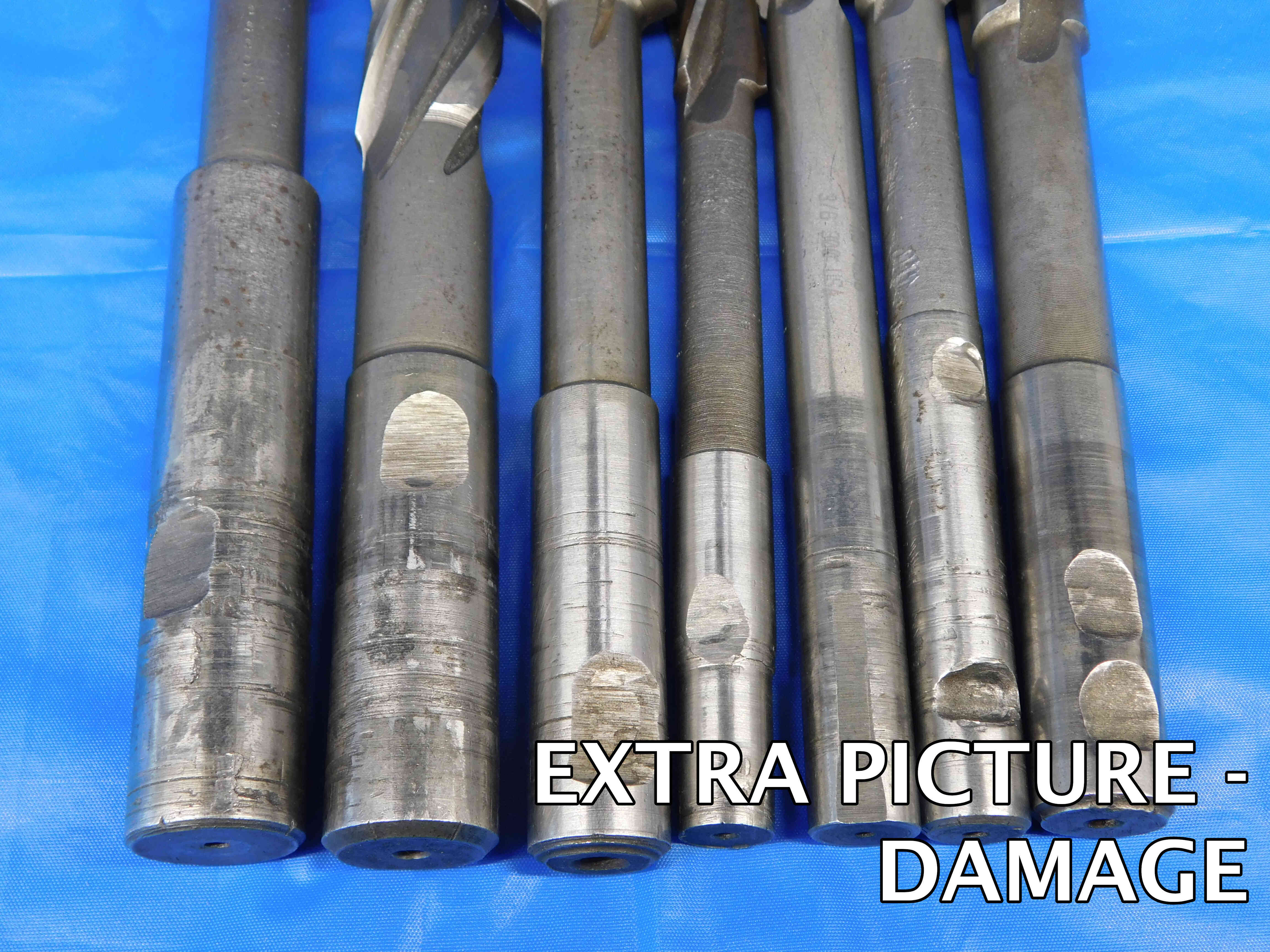
If no brand is labeled, click the "Unlabeled" button to the right of this cell. Make sure this is not left blank, or the listing will not upload properly. Note: Items are often labeled with the country of origin (USA, China, Japan, Poland, etc). This should NOT be entered as the brand, and furthermore should not be included in the listing at all EXCEPT for USA which can be used as a filler.

High Speed Steel (often abbreviated as HSS or sometimes just HS) is the most common counterbore material. It is cost effective and works well for many general purpose applications. HSS typically has a bright silver appearance and will be relatively lightweight.
Cobalt has higher hardness and heat resistance when compared HSS. It is slightly heavier than steel and typically has a dull gold or bronze color. Cobalt may be labeled as M42, which is an HSS-Cobalt alloy and can be listed as just Cobalt. You may also see "HSSCo" which also means HSS-Cobalt.
Carbide has even higher toughness and wear resistance than cobalt and is ideal for cutting certain hard materials. It typically has a dark gray color but can often look very similar to HSS. The easiest way to distinguish carbide is by its weight - carbide is very heavy and will weight about twice as much as steel.
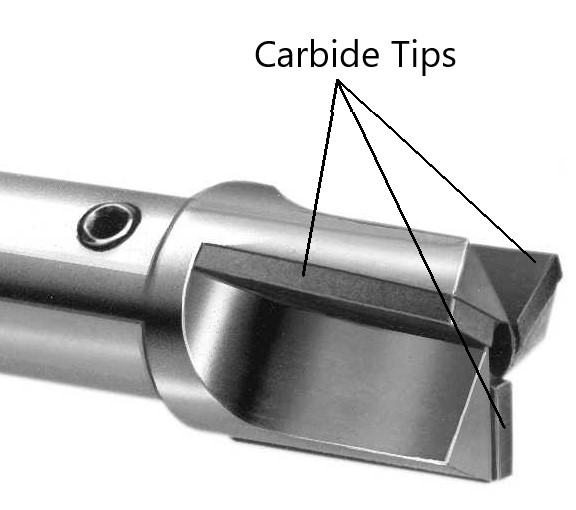
HSS or cobalt counterbores will sometimes be reinforced with carbide-tipped cutting edges. You will see a distinct separation and color difference between the carbide tips and the rest of the counterbore, and they may or may not go all the way down the length of the flute.
Note: Solid carbide counterbores should not be considered carbide-tipped, as this description is meant for counterbores in which only the cutting edges are carbide.
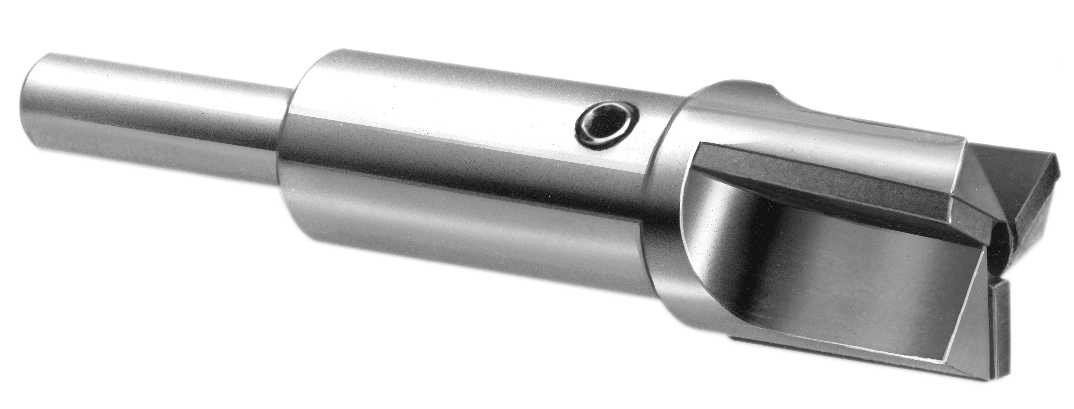
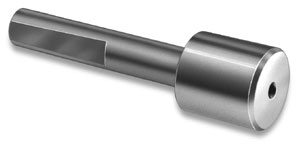
While many counterbores have pilots which are an integral, non-removable part of the tool, some are made with a pilot hole that can hold interchangeable pilots of various sizes. These pilots have a straight shank which is inserted into the pilot hole and held in place with a set screw.
In addition to whether or not the pilot is interchangeable, you will also need to note whether or not the counterbore currently holds a pilot. If it does not, the next section will be changed slightly.
The pilot diameter will sometimes be labeled, but if not it can be measured using calipers. This will often be a common fractional size such as 3/8" or 5/16", but pilots can also be metric sizes or even specific "off-size" decimal sizes. Try to be as precise as possible with this measurement, and do not round if it is more than .005" off from a fractional size.
If you answered "N" to "Currently Has Pilot?", this section will instead ask you for the Pilot Hole Diameter. The inner diameter of the pilot hole can likewise be measured with calipers and will often be a common size.
If a counterbore has neither a pilot nor a pilot hole (which is uncommon), you may leave this section blank.
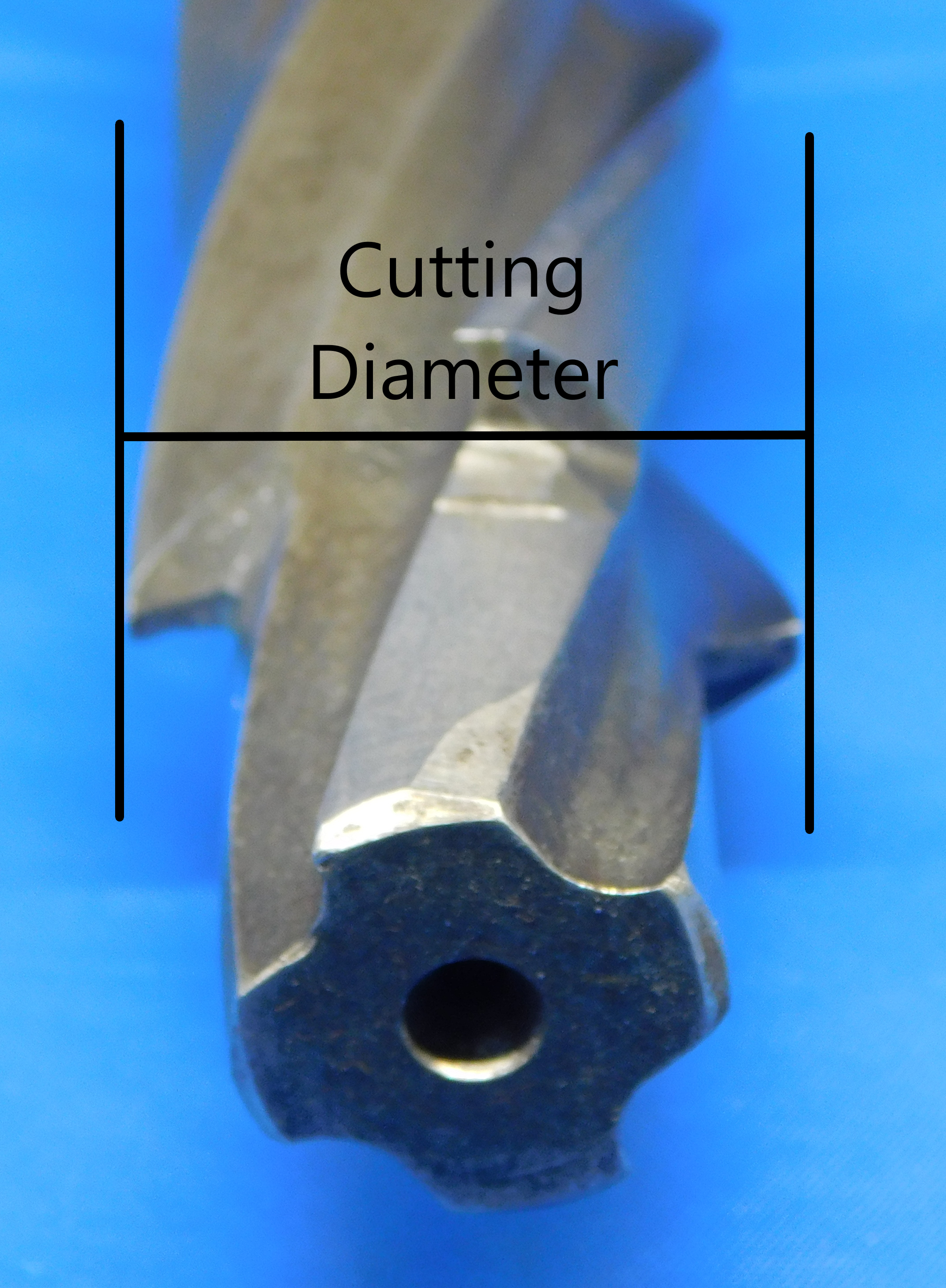
Like the pilot diameter, the cutting diameter will often be labeled. If the counterbore has an even number of flutes, the cutting diameter can be measured with calipers by measuring the distance between two opposite cutting edges as shown in the picture above.
If a counterbore has an odd number of flutes, this measurement becomes more complicated. Measure the distance from one cutting edge to the outer edge of the pilot (or pilot hole), multiply this number by two, and then add the diameter of the pilot (or pilot hole). This should give you the cutting diameter, although it can sometimes be difficult to get precise measurements using this method so rounding may be appropriate if you are getting a number that is very close to a common size. Contact your trainer if you need help determining the cutting diameter of a counterbore.
Note: When entering a whole-number inch size, always include the " sign. The " sign should not be included for any size including a fraction or decimal. So, for example: If a counterbore's cutting diameter is exactly one inch, it should be entered as 1" and not just 1. If the cutting diameter is one and a half inches, it should be entered as 1 1/2 or 1.5 and not 1 1/2" or 1.5".
Metric size measurements should be entered with a lowercase "mm" (ex.: 16mm, 40mm).
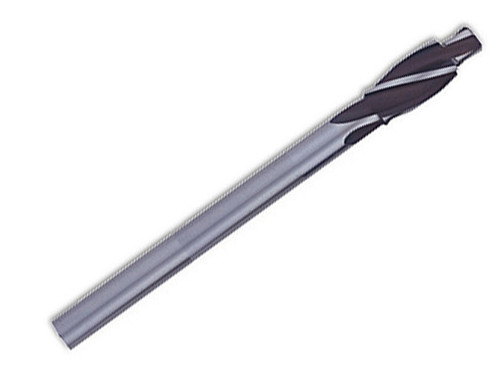

Counterbores will typically have either a straight shank or a Morse Taper shank. In the images above, the counterbore on the left has a straight shank and the counterbore on the right has a Morse taper shank. Morse tapers can be identified by their gradual taper and flat Tang section at the end.
Straight Shanks can be measured with calipers, and will often be common sizes. Like the pilot and cutting diameters, however, this is a precise measurement and should not be rounded if it is more than .005" off from a fractional size.
Morse Taper sizes are measured with calipers at the large end (the largest diameter on the portion of the shank that tapers) corresponding with the chart below:
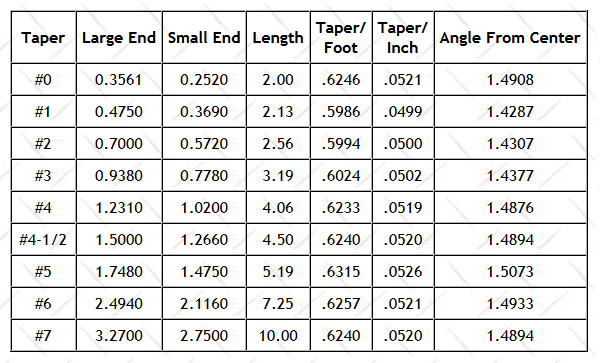
This is simply the number of cutting edges on the counterbore. Counterbores most commonly have 3 or 4 flutes, but you may encounter some that have 2 flutes or even 5 or more.
Any part number or other important labeling should be entered here, exactly as it appears on the counterbore. If the pilot and cutting diameters are given in the labeling (for example, "1/4 x 7/8" where 1/4 is the pilot and 7/8 is the cutting diameter), this does not need to be included as part of the labeling since it will already be listed in the previous sections.
The "Filler" section is used to add other relevant information to the title which is not covered by the other sections. Fillers can be a good way to increase a listing's visibility - we always want to include as much information as possible that we think a customer might be searching for in order to make sure that our listing is coming up in their search results.
There is not necessarily one right answer when it comes to fillers, and often it will be up to you to decide what should and should not be added as filler. Counterbores will usually not require much filler, but here are some suggestions for what can be included:
-Secondary labeling or branding / product names
-"USA" or "USA Made" for any US Manufacturers (you may need quickly research a brand if you are not sure since this will not always be specifically labeled)
-For counterbores with interchangeable pilots that do not currently hold a pilot, the inner diameter of the pilot hole should be included as filler. If there is not enough space, it should be listed in the Additional Specifications section (detailed below).
-For counterbores with off-size cutting diameters, the nearest fractional size should be included as a filler (as well as it's decimal equivalent if there is room). Metric conversions can be included as filler as well, rounded to the nearest .1mm.
Note: Keep in mind that titles have a maximum limit of 80 characters.
Additional Specifications & Special Condition
The Additional Specifications section should be used for any secondary labeling or additional measurements that do not fit in the other sections of the listing. There is no character limit here so any relevant information that is not already covered should be included (within reason - we don't want to overload the listing with unnecessary information, so ask your trainer if you are not sure whether or not to include something in this section).
The Special Condition section should be used for any special notes about the item's condition such as damage or modification. Try to be specific when describing the condition, and reference pictures that point out the damage / modification if applicable. For example, "One of the cutting edges is chipped - see picture #5 for details." General wear and tear does not need to be mentioned, but anything that will affect the tool's usage should be included here.
Once all information is entered, click here for the next steps.
